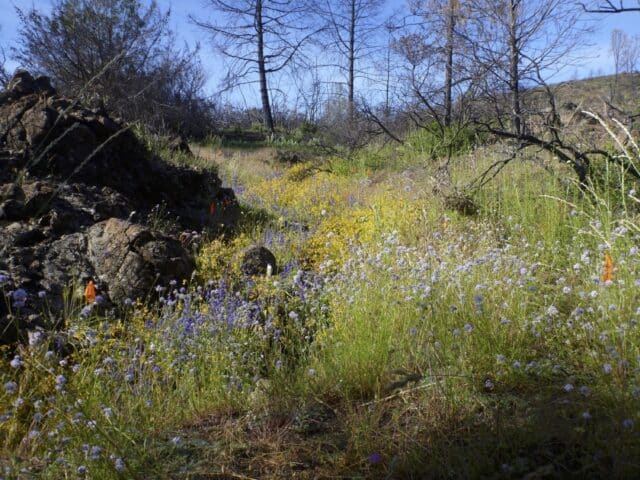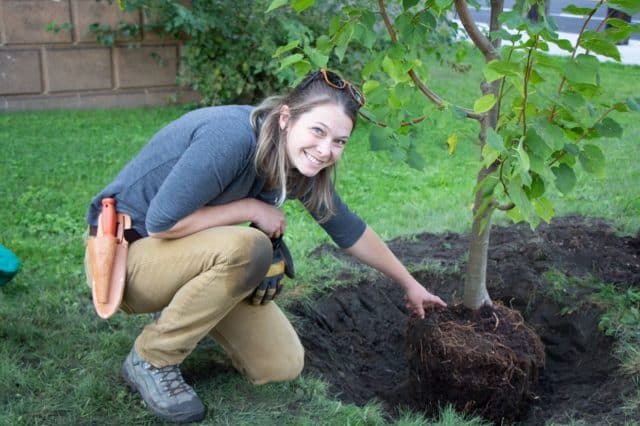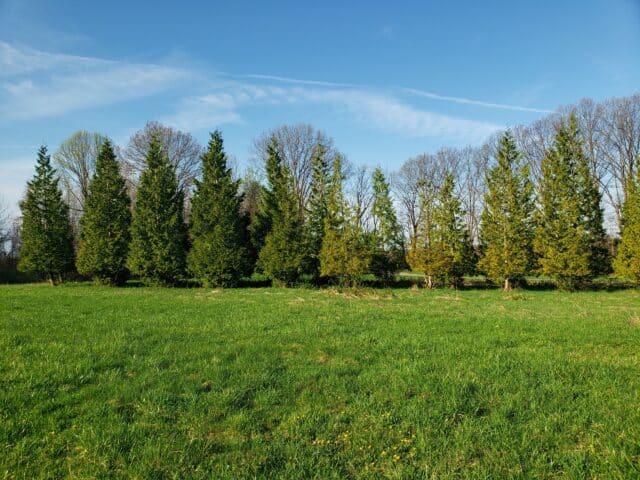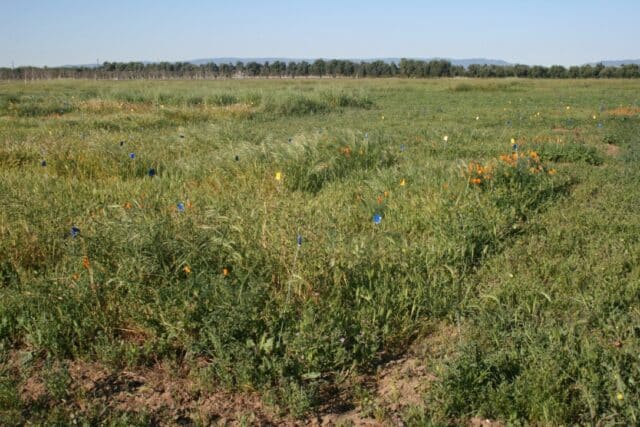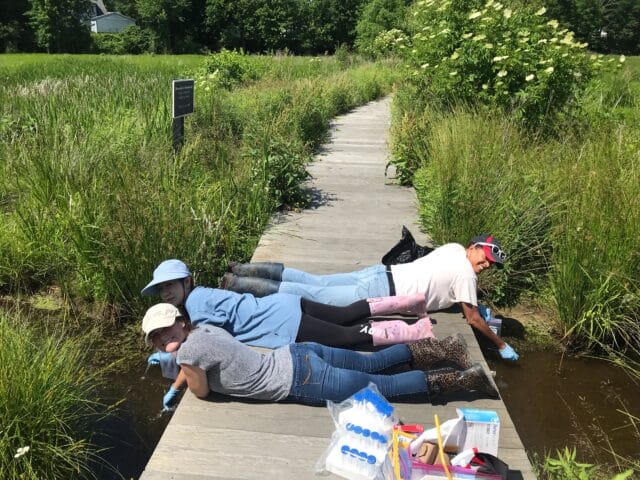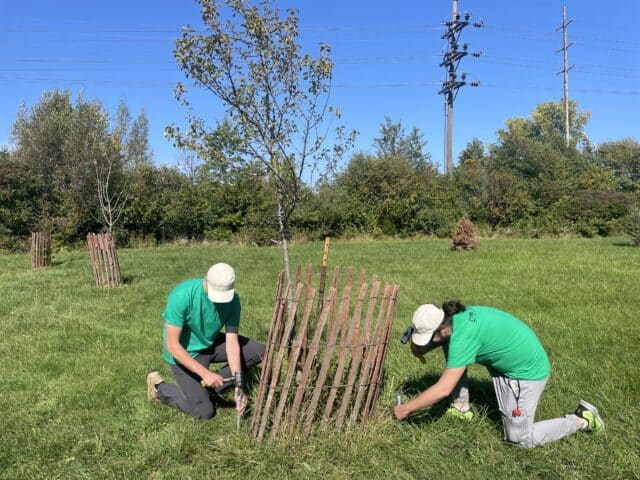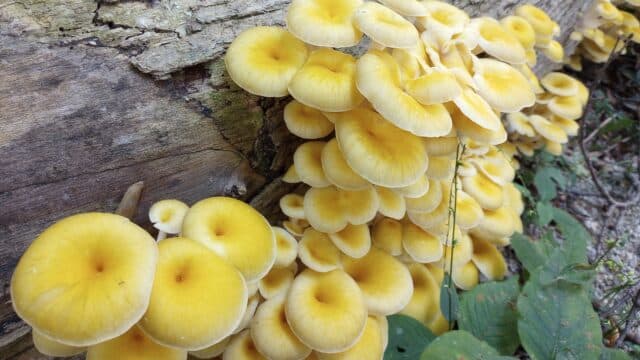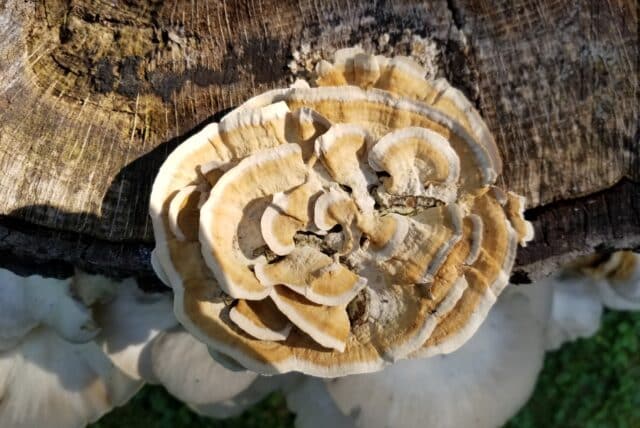
By: David Burke & Anna Funk
Beech trees looking a little rough? Ours, too. Beech leaf disease is prevalent in our area. You’ll know it by the green stripes (called interveinal banding) on the leaves and sometimes thick, leathery, or even stunted-looking leaves. The disease is relatively new on the scene, and researchers at Holden and beyond are hard at work looking for treatments. So far, we haven’t found any promising pesticides, but one action may slow the disease’s progression: Trimming trees to increase light and air flow in the canopy.
Why trimming may help beeches
Beech leaf disease is caused by a nematode, a microscopic wormlike animal, from Japan. We think these nematodes do their harm over the winter, which they spend in the tree’s buds. When the leaf opens up in the spring, it already has beech leaf disease — the damage is done. After spending spring and summer in the leaves, the nematodes crawl back out and move back into the buds, and the cycle repeats.
We did an experiment in the greenhouse where we added nematodes to beech buds, and when those buds opened up in spring, they had beech leaf disease as expected. But when new buds opened the following spring on the same trees, there was no sign of disease. But that’s not what we see out in nature; the beech trees stay sick year after year.
We figured out that the difference was in how the trees were getting their water. In nature, of course, it rains. But in the greenhouse, we water straight into the pots — the leaves never get wet. And we think the nematodes need a water film to move.
When plants get wet, these animals are so tiny that they can swim through the water film to spread along stems and leaves. If you’re a gardener, you may have noticed your asters and chrysanthemums look terrible, like the leaves have been torched from the bottom-up, during a wet year — that’s because of foliar nematodes.
So we know foliar nematodes need water to move around, and that seems to be the case with the beech nematodes as well. They need a water film to be able to get out of the leaf and into the bud. This is also why we think the interveinal banding occurs — they can’t get past the veins in the leaf (without crawling out and then back in, that is). That’s our hypothesis, anyway.
Out in the forest, what we see is that the understory and the lower branches of trees are the most heavily impacted by beech leaf disease. That tracks because it’s shadier, it’s cooler, you’re going to have more moisture hanging on those leaves — especially in the fall. Once you get way up into the upper canopy of mature trees in the forest, into the light where there’s good circulation and they can dry out faster, you see much less beech leaf disease. We don’t have experimental data to back this up, yet, but observationally it all makes sense. As Yogi Berra once said, you can observe a lot just by watching.
All this means if we can keep beech leaves dry in late summer and into September, the nematodes will have a hard time getting out of the leaf and into the bud. That’s tough to prevent, since that time of year gets dewey in the mornings and we start to see more rain and storms than the dry summer, but doing some structural pruning to increase light and air circulation between branches can help. If we can prevent that water film from collecting, those leaves will fall off the tree with the nematodes still trapped inside.
Tree trimming tips
If you have beeches, try to open up the canopy. You can do it in such a way that the tree looks good and healthy and happy. Any leaves and branches you can dry out a bit this year may be your healthy leaves next spring. As a general rule, each year a tree should not have more than 25% of its branches trimmed.
To try and stop nematode movement, the earlier you can trim before the cool wetness of fall sets in, the better. We know that when we sample beech buds in August, we don’t find any nematodes in them. But as we move through August and into September, a greater and greater percentage of buds have nematodes until every single bud has nematodes by the end of September.
That said, we normally recommend people trim their trees later in the season — in late fall, winter, or early spring when the tree has no living leaves. That’s because if you trim while it’s still warm, trimming can increase sap flow and attract insects, and increases the odds of infection at the wounds. For this reason, trimming early for beech is a possible exception to the rule, but the decision comes down to the homeowner. Trimming early to ease the tree’s nematode load does put the tree at risk for other types of infections.
If your nematode situation doesn’t seem urgent, you might wait for the dormant season to trim. If you want to trim the most symptomatic branches, you can flag them while they still have leaves and cut them later in the season — you’ll still be removing nematode-infected buds from the tree. You won’t achieve the fall drying-out effects until the following year, but the benefit is you won’t put your tree at risk of secondary infections.
Regardless of what you decide about trimming, regular tree care such as a fall or spring fertilization treatment and proper mulch application around the base of the tree will help whether or not it has the disease symptoms.
[Read more about basic tree care tips.]
If you have any questions, please feel free to reach out to the Holden Arboretum! We are here to be a resource to you. Email beech care questions to Rachel Kappler at [email protected].

David J. Burke, PhD
Vice President for Science and Conservation
Dr. David Burke is the Vice President for Science and Conservation at Holden Forests & Gardens, and the principal investigator of Holden’s soil ecology lab. Dr. Burke is a leader in the study of beech leaf disease, a new forest pathogen sweeping across North America from its epicenter in northeastern Ohio. His work has helped identify the means of the disease’s spread, and his continuing work aims to reveal the mechanisms of the disease as well as a path to breeding trees resistant to the trees. Although he’s recently served as a forest pathologist out of need, Dr. Burke is a soil ecologist at heart, primarily interested in the interactions between plants and the microorganisms that live in the soil like the mycorrhizal fungi that form mutually beneficial relationships with plants. These mycorrhizal fungi may be key to the health of many natural communities, so a better understanding of their diversity, how they interact with plants and other soil microbes, and how this in turn affects ecosystem health is necessary for the future sound management of natural systems.
